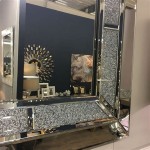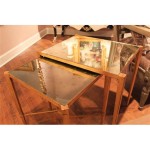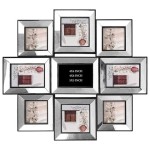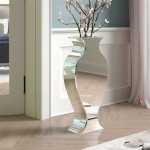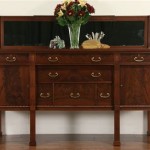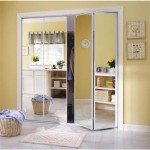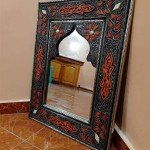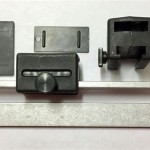How To Hang a Heavy Mirror Without Studs
Hanging a heavy mirror securely on a wall without access to studs requires careful planning and the right hardware. While studs offer the most secure anchoring points, various alternative methods provide sufficient support for substantial mirrors when studs are unavailable or impractical.
The first step involves accurately assessing the mirror's weight. Consult the manufacturer's specifications or use a bathroom scale to obtain the precise weight. This information is crucial for selecting appropriate hanging hardware that can safely support the load.
Several hardware options exist for hanging heavy mirrors without studs. Drywall anchors, specifically designed for hollow walls, are a common choice. Several types of drywall anchors are available, each with varying weight capacities. Toggle bolts offer a robust solution, especially for heavier mirrors. They work by expanding behind the drywall to distribute the weight. Heavy-duty adhesive strips designed specifically for mirrors provide another option for lighter to medium-weight mirrors.
Choosing the right hardware depends on the mirror's weight and the wall's construction. For lighter mirrors (under 10 pounds), adhesive strips might suffice. For mirrors weighing between 10 and 25 pounds, heavy-duty drywall anchors, such as molly bolts or threaded drywall anchors, are recommended. For mirrors exceeding 25 pounds, toggle bolts offer the most secure option.
Before installation, careful preparation is essential. Locate the desired position for the mirror on the wall. Use a pencil and a level to mark the top and bottom edges of the mirror, ensuring it hangs straight. Measure the distance between the hanging hardware on the back of the mirror to determine the corresponding points on the wall where the anchors or toggle bolts need to be inserted.
If using drywall anchors, follow the manufacturer's instructions for installation. Generally, this involves drilling a pilot hole of the appropriate size, inserting the anchor, and then securing it to the wall. For toggle bolts, drill a larger hole to accommodate the toggle mechanism. Insert the toggle bolt through the hanging hardware on the back of the mirror, then tighten it until it's snug against the wall.
When using adhesive strips, ensure the wall surface is clean and dry. Apply the strips to the back of the mirror according to the manufacturer's instructions. Then, carefully align the mirror with the markings on the wall and press firmly to secure the adhesive.
A crucial factor in successfully hanging a heavy mirror involves distributing the weight evenly. This is particularly important for larger mirrors. Using multiple hanging points helps distribute the load and prevents excessive stress on any single anchor or bolt. Consider using wire or D-ring hangers attached to the back of the mirror in conjunction with multiple anchors or toggle bolts.
Safety should be a primary concern throughout the installation process. Always wear appropriate safety glasses when drilling. If working with particularly heavy mirrors, enlist the help of another person to assist with lifting and positioning. A stud finder can be used to identify wall studs if there is any uncertainty about their location. While this article focuses on hanging mirrors without studs, utilizing a stud whenever possible provides the most secure mounting.
The specific tools required will vary depending on the chosen hanging method. However, some common tools include a drill with appropriately sized drill bits, a level, a pencil, a measuring tape, and a screwdriver. For heavier mirrors, a stud finder may also be helpful.
Once the mirror is hung, test its stability by gently pushing on different areas. If the mirror feels secure, the installation is complete. Regularly inspect the hanging hardware for signs of wear or loosening, especially for heavy mirrors. If any issues are detected, address them promptly to prevent the mirror from falling.
Different wall materials require different approaches. For concrete or brick walls, specialized anchors and drill bits designed for masonry are necessary. Consult a hardware professional for guidance on the appropriate hardware and installation methods for these wall types.
Proper planning and execution are essential for successfully hanging a heavy mirror without studs. By following these steps and using the appropriate hardware, individuals can safely and securely display their mirrors without the need to locate a stud.
How To Hang A Heavy Mirror On Drywall Without Damaging It Or The Wall Quora

How To Hanging A Mirror Without Stud Heavy

A Better Way To Hang Heavy Mirror Hanging Pictures On The Wall

How To Hang A Heavy Mirror C R F T

How To Hang Heavy Items Without A Stud

How To Hang A Large Or Heavy Mirror

How To Hang A 31kg Mirror On Wall With Bunnings Work Community

How To Hang A Heavy Mirror The Home Depot

How To Hang A Heavy Mirror

How To Hang A Heavy Mirror With French Cleat

